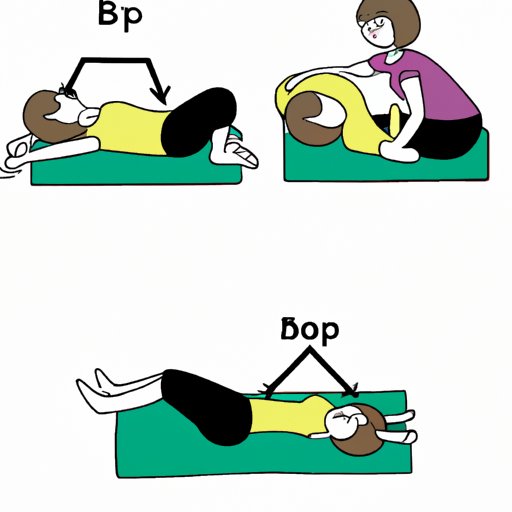Introduction
A cesarean section (or C-section) is a major surgery in which an incision is made in the abdomen and uterus in order to deliver a baby. While C-sections are often necessary for the safety of both the mother and baby, they can also take a toll on the body and require a significant amount of recovery time. However, exercising after a C-section can help promote healing and provide numerous health benefits. This article will explore when it is safe to exercise after a C-section and provide tips for a successful recovery.
Timeframes for Exercising After a C-Section
Before resuming any kind of physical activity, it’s important to get clearance from your doctor or midwife. Generally speaking, most medical professionals recommend waiting at least four to six weeks before engaging in any kind of physical activity. This gives the body enough time to heal and recover from the surgery. However, this timeframe can vary depending on factors such as the type of C-section performed, the mother’s health, and the baby’s health.
It’s also important to note that while some women may feel physically ready to exercise after four to six weeks, they may not be emotionally ready. It’s common to experience postpartum depression and anxiety following a C-section, so it’s important to take the time to address these issues before embarking on an exercise regimen.
Exercises to Avoid After a C-Section
Once you have been cleared to exercise by your doctor or midwife, there are certain activities that should be avoided in the early stages of recovery. Abdominal exercises, such as crunches and sit-ups, should be avoided as they can put strain on the muscles that were cut during the surgery. High-impact activities such as running and jumping should also be avoided until the body has fully healed.
What to Expect When Returning to Exercise After a C-Section
When returning to exercise after a C-section, it’s important to listen to your body and take things slowly. Start with low-impact activities such as walking, swimming, and yoga. These activities will help build strength and endurance without putting too much strain on the body. As you progress, you can gradually increase the intensity of your workouts. However, if you experience any pain or discomfort, stop immediately and consult your doctor.
It’s also important to remember that it’s normal to feel tired and weak after a C-section. Don’t be discouraged if you don’t reach your pre-pregnancy fitness level right away. It takes time for the body to heal and regain its strength.
How to Modify Exercise After a C-Section
Low-impact activities such as walking, swimming, and cycling can all help strengthen the body without putting too much strain on the abdominal muscles. Strengthening exercises such as squats and lunges can also be beneficial for building core strength. It’s important to start slow and gradually increase the intensity of your workouts as your body begins to heal and regain its strength.
Tips for Recovering Quickly After a C-Section
In addition to exercise, there are a few other things you can do to accelerate the healing process after a C-section. Eating a balanced diet rich in fruits, vegetables, and lean proteins can help provide the body with the nutrients it needs to heal and rebuild muscle. Getting adequate rest is also essential for a speedy recovery. Staying hydrated is also important as it helps flush out toxins and keeps the body functioning optimally.
Conclusion
Exercising after a C-section can help promote healing and provide numerous health benefits. While it’s important to get clearance from your doctor or midwife before returning to physical activity, most medical professionals recommend waiting at least four to six weeks before engaging in any kind of physical activity. Abdominal exercises and high-impact activities should be avoided in the early stages of recovery. Low-impact activities such as walking, swimming, and yoga can help build strength and endurance without putting too much strain on the body. Lastly, proper nutrition, getting adequate rest, and staying hydrated can all help speed up the recovery process. Remember to take care of yourself and listen to your body as you make your way back to your pre-pregnancy fitness level.
(Note: Is this article not meeting your expectations? Do you have knowledge or insights to share? Unlock new opportunities and expand your reach by joining our authors team. Click Registration to join us and share your expertise with our readers.)
